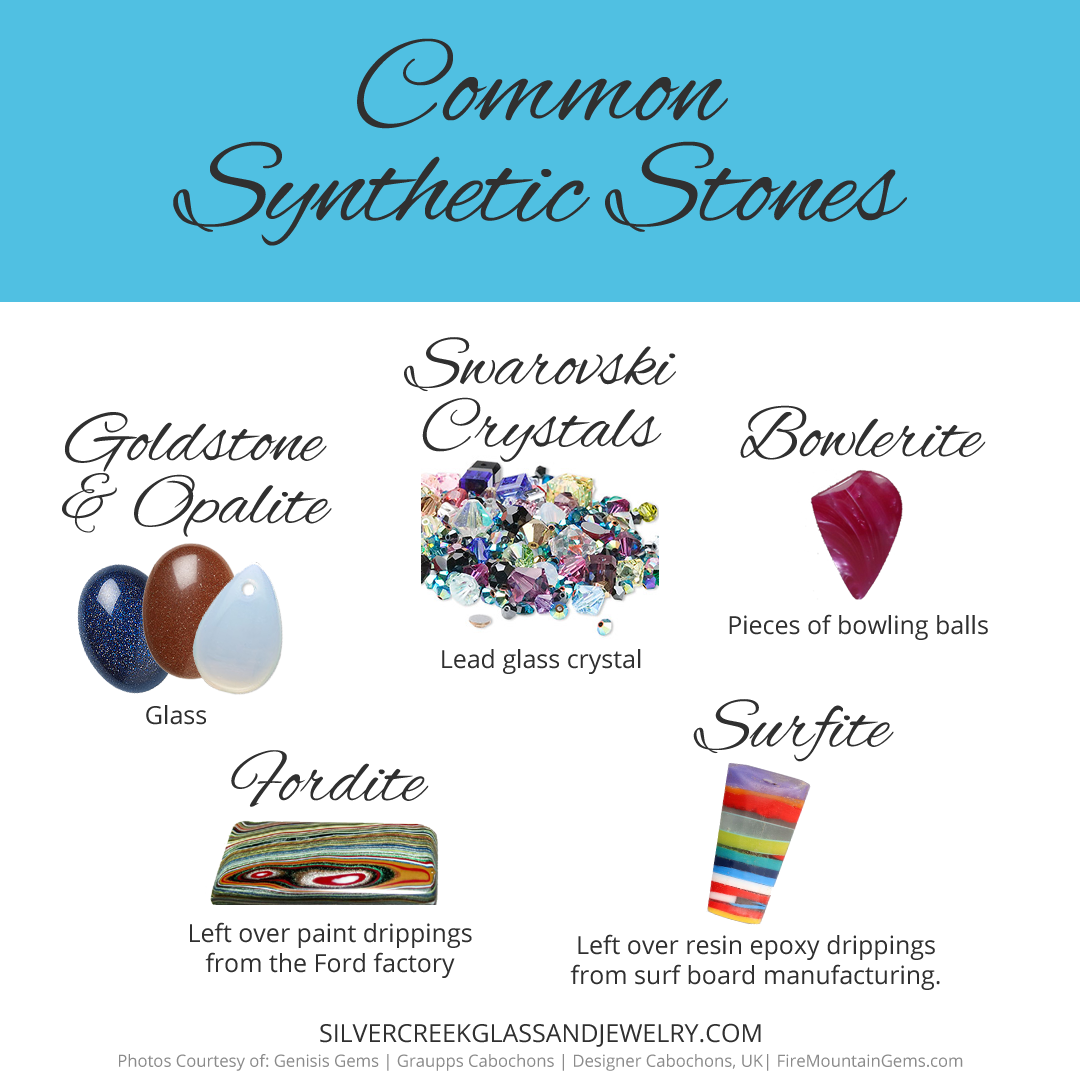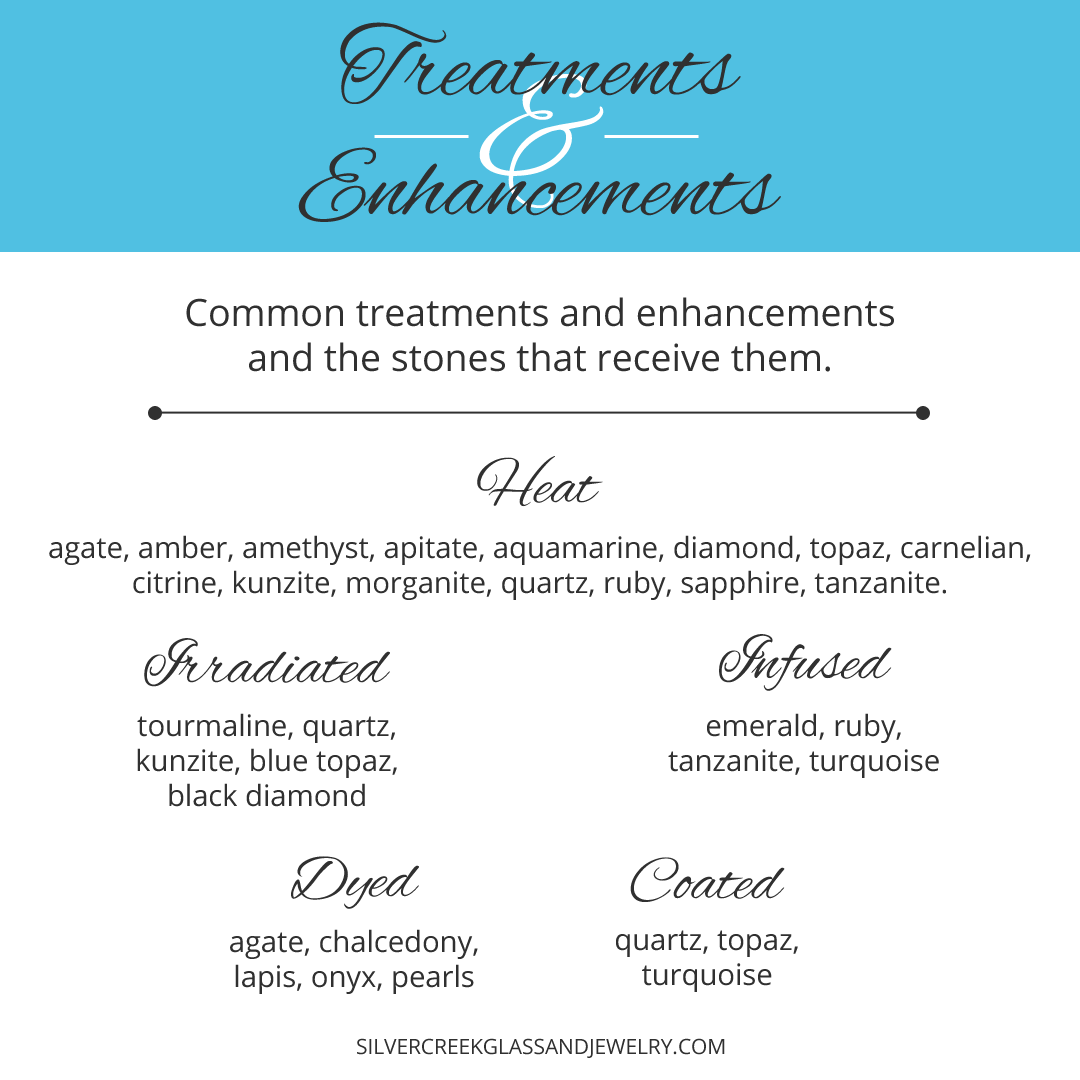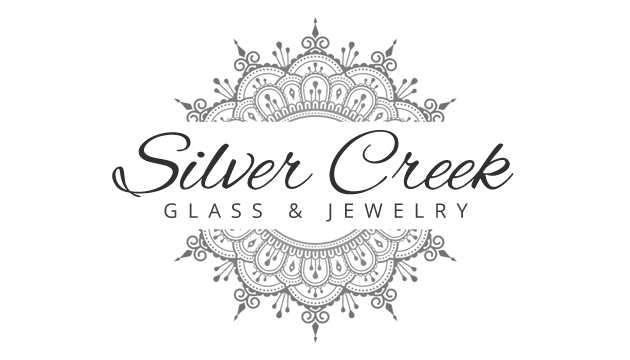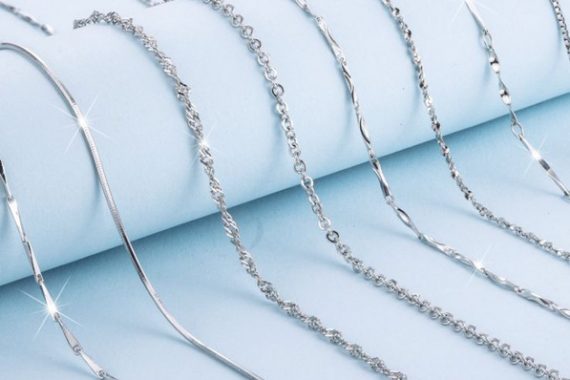Natural, Lab-Created, or Synthetic Stones – What’s the Difference?
Knowledge is power! Knowing the difference between synthetic stones, lab-created stones, natural stones, and what exactly the difference of each type is, gives you, the buyer, a bit more power and hopefully, more bang for your buying buck. Highlighting the importance of transparency through providing upfront disclosure is something you can expect from me, here at Silver Creek Glass & Jewelry.
A bit of a disclaimer before we get started though. Some folks’ definitions of natural, lab or synthetic stones differ, for example, purists are far more strict in their definition of a natural stone, believing that a stone can only be considered natural if it comes out of the ground and receives no treatments or enhancements, so a stone that is heated to enhance it’s color would not be considered natural. Other folks believe that a stone is still natural even if it’s received treatments and/or enhancements. This is how I define these terms and use these definitions.
Natural Stones
Natural stones are stones that are mined from the ground. They can receive any sort of treatment or enhancement. Due to their rarity the vast majority of colored gemstones on the market, in fine jewelry stores, and here, at Silver Creek Glass & Jewelry, have received some sort of treatment or enhancement. There are lots of treatments and enhancements but I’ll only be touching on the most common and industry-accepted ones a little further below.
Lab-Created Stones
Lab-created stones are just that, stones created in a lab. Some folks consider lab stones to be synthetic since they are technically ‘man-made’. Other folks disagree and here is why: they are identical to the natural stone in every way, including chemistry, composition, and hardness, with an outstanding cut, clarity, and color refraction. Where they are grown is the only difference. One grows in the earth, the other in a lab. One is natural but both are real. They also undergo a lot of the same treatments that natural stones do. Some lab-created stones are extremely difficult for gemological experts to tell apart from the natural version. I am in that latter camp. I do not consider lab-created stones ‘man-made’ and readily label their origin as “Lab” on my website. Lab-created stones are a great, ethical, eco-friendly, sustainable, alternative to natural stones. This allows you to enjoy the beauty of a natural, high-quality stone at a fraction of the price.
Synthetic Stones
Synthetic stones are man-made and are in no way chemically the same as natural or lab stones. Some more common examples of synthetic stones are cubic zirconia (CZ), bowlerite, fordite, opalite, goldstone, surfite, Swarovski crystals, and rhinestones. Just because a ‘stone’ is synthetic doesn’t mean it’s not worthy of being a beautiful piece of jewelry, on the contrary. CZ’s come in a vast range of colors, shapes, and sizes. Bowlerite has some beautiful colors, patterns, and depth, as does surfite. Resin is also a popular medium to create ‘stones’ from.

Treatments and Enhancements
There are a lot of different industry-accepted enhancements and treatments stones can receive. I’ll only be touching on the most common ones. Cutting and polishing are not considered a treatment or enhancement. Heating a stone to enhance its color is very common and should just be assumed unless you know, for sure, that it hasn’t been heated. Irradiating, using radiation to enhance or change the color of gems, is another very common enhancement. Dying is another very common treatment and has been practiced for ages. Putting super-thin coatings on stones to enhance their color or change their color is common. Softer stones, like turquoise, tend to be stabilized with resins and or epoxies so they stay together. Soft or thin stones are also backed to stabilize and strengthen them or they are topped with a layer of clear quartz. It’s common practice for natural emeralds to be ‘oiled’ or rubies to be filled with glass, which enhances their clarity.

Dastardly Deeds
There are many treatments and enhancements that must be disclosed upfront. Unfortunately, there are some jackasses out there that try to be shady by using these enhancements for evil instead of good. Of course, there are many different ways to achieve this, but one of the most common is by taking one natural stone, working their voodoo on it, and then passing it off as a different stone. A prime example of this is turquoise. One of the most commonly faked stones is turquoise. Dyed and stabilized howlite or magnesite are the most common fakes. There are many many ways to pass along fake stones so be diligent and don’t be afraid to ask questions about the stones in your jewelry.
Layin’ it Out There
At Silver Creek Glass & Jewelry, I tend to use natural and lab-created stones the most, however, being a glassblower too, my glass is also featured in my jewelry. You don’t have to wonder about the stones in the jewelry you buy from me here at Silver Creek Glass & Jewelry. I put in the extra work to make sure the stones I source are ethically obtained and adhere to quality standards. You’ll find the materials used in each piece of Silver Creek Glass & Jewelry listed in the description, for example, this spider pendant. I make sure that any known treatments or enhancements are disclosed upfront, assuring that you have all the information needed to make your decision. After all, you get far more enjoyment out of the little luxuries you treat yourself to when you’re secure that you’ve made an informed purchase.




